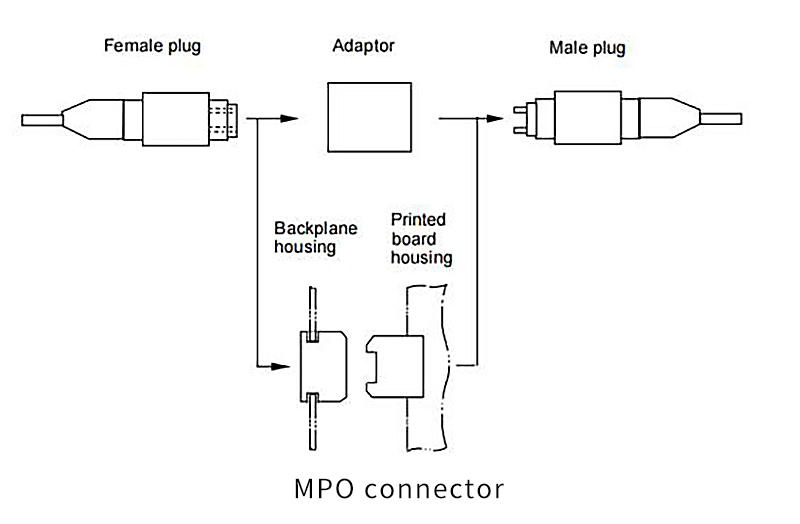
MPO interfaces: efficient solutions for fiber optic communications
With the rapid development of information technology, the demand for high-speed data transmission is growing. Among many transmission media, optical fiber has become an indispensable part of modern communication network with its advantages of high speed, high bandwidth and anti-interference, etc. MPO (Multi-fiber Push On) interface, as an important connection method in optical fiber communication, is gradually receiving wide attention from the industry.
I. Overview of MPO Interface
MPO interface, that is, multi-fiber connector (Multi-fiber Push On/Pull Off), is a standardized interface designed for high-density fiber optic connections.MPO connector can be connected to multiple optical fibers at once, usually 12 cores of optical fibers in a row, but also can support one or more rows of optical fibers in the same MPO connector. Depending on the number of cores discharged in the connector, it can be categorized into one row (12 cores) and multiple rows (24 cores or more). The standard is regulated by IEC 61754-7.
The type of MPO connector can be distinguished by several factors, including the number of cores (number of fiber arrays), male and female connectors, polarity (Key), type of polish (PC or APC), etc. The type of connector is determined by the number of cores (number of fiber arrays) and the number of fibers in the array. When connecting, certain principles must be : the same number of connectors must be connected (e.g., 12 to 12, 24 to 24, etc.); a male and a female connector are connected as a pair; and the same polish type must be connected (e.g., PC to PC, APC to APC).
MPO connector polarity is governed by Key, which is defined as Key Up and Key Down. pairs of MPO connectors are matched by MPO adapters, which are available in Type A (Up-Down, i.e., Key Up/Key Down) and Type B (Up-Up, i.e., Key Up/Key Up). MPO connectors (single mode) with APC connecting surface have 8° bevels and can only be matched by class A adapters.
II.MPO Interface Types
There are two main types of MPO interfaces: Mini-MPO and standard MPO. In addition, MPO interfaces can be further divided into three main forms: adapters, backplane sockets, and printed board sockets. Mini-MPO connectors are suitable for 1, 2, and 4-core fiber optic connections, and are more commonly used in 40G, 100G, and 200G fiber optic modules, whereas standard MPO connectors are suitable for 2-12-core and 16-24-core fibers, and standard MPO connectors are suitable for 2-12-core and 16-24-core fibers. The standard MPO connector is suitable for 2-12 and 16-24 core fiber connection, which is more used in some high speed optical modules, such as 400G and 800G optical modules. This classification makes the MPO interface able to meet different sizes and needs of fiber optic communication systems.
III.Comparison of Mini-MPO and Standard MPO Interface Size Specifications
The size of MPO interface is different according to the number of cores, Mini-MPO is 4.4mm x 2.45mm, which is suitable for smaller scale fiber optic connection, while the size of standard MPO is 6.4mm x 2.45mm, which is suitable for larger scale fiber optic connection needs.


IV. Application Scenarios
MPO interface has low insertion loss, high return loss, good durability and other characteristics, can support 40G and 100G network applications. Its fiber optic patch cords are divided into adapter type and non-adapter type, adapter MPO patch cord variety, can be adapted out of 2-24 core 0.9 or 2.0 fiber optic cable branch, the type of connector can be selected from FC, LC, SC, ST and so on.
It has a wide range of application scenarios, including LAN cabling between different buildings, optical link interconnection in optical active equipment, cabling in communication base stations, cabling in distribution boxes, optical signal connection in residential/industrial/commercial buildings, as well as dense building cabling system, fiber optic communication system, cable TV network, telecommunication network, local area networks (LANs), wide area networks (WANs), FTTx and so on. etc.
Categories
New Blog
Tags
© Copyright: 2026 ETU-Link Technology CO ., LTD All Rights Reserved.

IPv6 network supported
Friendly Links:
易天官网